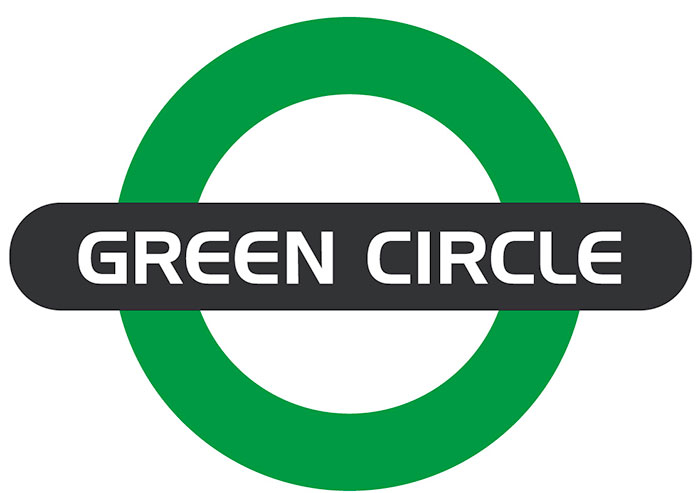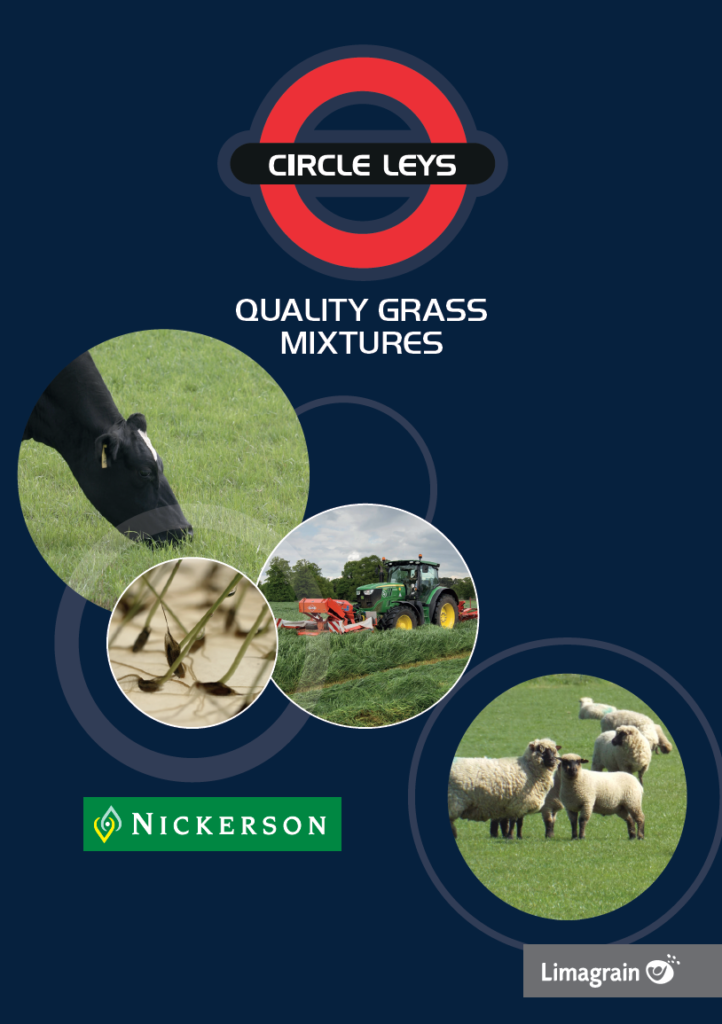Farms across the country have had a tough time over the last few years growing OSR. Many growers have cut back, and several have removed OSR from their rotation altogether. However, figures from Defra are showing that the area of OSR grown has increased in the Southeast of England. So, do the farms of the south know something the rest of the country does not?
The Southern part of the UK was decimated in 2019 with the OSR crop having the weather and the dreaded Cabbage Stem Flea Beetle (CSFB) against it. Many growers took the hit and swore they would never grow OSR again. However, many have kept going and have learnt to live with this pest.
Growing the correct variety; OSR is a high input crop so choosing a high yielding variety that can offer maximum return is key. LG Armada is the highest yielding OSR variety on the AHDB recommended list. Along with high yield, LG Armada also has pod shatter resistance, Turnip yellows virus resistance along with good resistance to light leaf spot and stem canker. Vigour varies between varieties, some have better Autumn vigour and some better Spring vigour, speak to your local seed specialist to find out which variety will suit you best.
Drilling timing and soil moisture; this is key to a fast establishment farmers that drill into moist seedbeds with rain in the forecast have more of a chance to beat adult CSFB damage, there is no doubt that we go into danger zone when the OSR emerges and then runs out of moisture. We need to be looking at the forecast rather than the calendar.
Companion and trap crops; There has been some anecdotal evidence of success with companion crops, especially when these companion crops are established before the OSR is drilled, the payments that can be claimed through the new Single Farm Incentive makes this even more attracting. OSR volunteers can also act as a trap crop and divert CSFB away from adjacent cash crops. When trap crops are destroyed, CSFB eggs or larvae die. In trials, the approach reduced adult CSFB infestation (by up to 88%) and damage (by up to 76%) in the oilseed rape cash crop. However, benefits were variable and not always observed.
OSR prices rising? Well, there are two things you can never really predict in farming, one being the weather and the second being markets. Prices have come back a long way since the immediate aftermath of Russia’s invasion of Ukraine but are starting to climb again at the time of writing in late May. There are also other reasons for optimism, the EU is set to ban unsustainable palm oil imports this year and this could lead to producers switching to rape seed oil instead, a cut in Canada’s canola production estimate for 2024/25 due to spring acreage shifts to wheat on the back of poor growing conditions has also been supporting prices more recently.
So, there is much reason to be optimistic for a crop that we know works well in cropping rotations, spreads the harvest workload, and has, and can still return a healthy gross margin.
A Word on Grass from Douglas BonnAs a new year starts thoughts of the coming season are not far away and the development of a grazing wedge or a good first cut of silage should be at the forefront of plans.
The key driver for all soil nutrition is pH and this ideally should be sitting around pH 6.5. Regular soil testing must be carried out to manage this factor. The type of fertiliser used makes a huge difference to the pH of the soil. The use of Calcium Nitrate (CAN) fertilizer has a lesser effect on pH with 1Kg reducing soil pH by 0.4 points where 1 Kg of Ammonium Nitrate and Urea will reduce it by 1.2 points.
A grass ley overwintering with too much growth can cause problems with disease and winter kill. Sheep winter grazing to reduce winter cover is a useful tool but if the goal is for an early grazing wedge or early first cut of silage sheep should be taken off the grass before the end of January.
Even with the best winter management there will always be an amount of winter kill to manage. In the resent years the introduction and development of the spring tine harrow has revolutionised the management of a grass ley. Running a grass harrow over a sward in early spring will remove any dead grass so creating space for new tillers it will also stimulate the first few centimetres of soil so absorbing atmospheric nitrogen.
The grass plant will “wake up” before visible signs show above ground. Over winter a grass plant loses much of its root mass, and this is the first part of the plant to grow as it comes out winter. The first 40 days of this process is key to provide the plant with the infrastructure to give the plant the nutrition it requires for the season .
I’ve made some assumptions when looking at the nutritional requirement for first cut silage or the development of a grazing wedge. I have assumed that the pH is 6.5, the soil indices are +2 and the expected yield of first cut silage is 25 tonnes per hectare @ 30% dry matter. The plant will therefore require 120Kg nitrogen (if soil pH is less than 6.5 and calcium content is less than 2,000mg/L CAN should be considered as the source of nitrogen), 40Kg of phosphate as P2O5, 80Kg potassium as K2O and 30Kg of sulphur as SO3.

Grass Ley January

Grass Ley March
As the shed doors close after a challenging harvest ‘23 we have been busy sowing the Nickerson demonstration sites for the coming season.
We have three sites this year. In Aberdeenshire at Savock Farms, Ellon by kind permission of Andrew Booth.
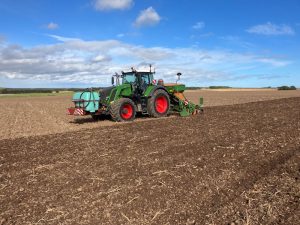
Savock Farms, Ellon
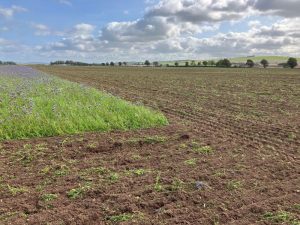
Barelees Farm, Borders
In Fife at Wellsgreen Farm by kind permission of WS & J Whiteford and in conjunction with Forth Crop Solutions and in the borders at Barelees Farm by kind permission of the Todd family.
At each site we have current popular varieties and new varieties to look at from both the Limagrain wheat breeding program as well as other breeders. Our focus this year has been on seed rates, so many varieties have been sown at different rates.
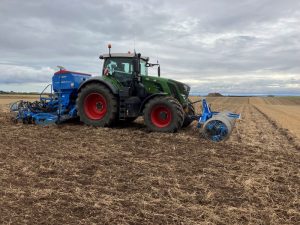
Wellsgreen Farm, Fife
Cultivation and the rotation position is different on each site. At Savock the demonstration is after winter oil seed rape, cultivated with a Simba XL and sown with an Amazon drill, at Wellsgreen the demonstration is following spring barley cultivated with Simba SL and sown with a Lemken power harrow drill. The Barelees site is after peas harvested in June and then sown in a cover crop. Most of the field was cultivated with a Terrano the day before sowing with an area left to allow us to drill into the cultivated area and directly into the cover crop with a Vaderstad Rapid.
Updates will be posted throughout the season but if anyone would like to visit any of the sites please contact either Nick or Douglas.
Before you drill grassThe two main factors to consider are your soil status and condition.
Ensure the area is tested for appropriate nutrient levels – pH, in particular, is vitally important.
Full Reseed
Full Reseed: soil needs to be consolidated, which starts early. Every pass should aim to further consolidate the seedbed. Do not wait and roll it twice afterwards – the area will be far more level and uniform if you start consolidation early. Ideally, roll prior to sowing as this also gives a more uniform sowing depth.
Longer term leys will achieve a greater ground cover if the seed is broadcast uniformly, as it attains a high percentage of yield from tiller density.
Short term leys tiller density and growth habit are different, so sowing in rowsq using a conventional drill can be an option.
A two-year break from long term grass is ideal to reduce the risk of pests. Failing this, reducing pest population and dense organic matter can often be achieved by using a grazing catch crop, such as stubble turnips.
Overseeding
Overseeding is simply a short-term fix and will not have a long-term benefit.
It will allow a yield increase in many situations but a field by field assessment is essential. Firstly, consider any pests and how to control them. Secondly, assess the level of undesirable plant species that are present.
More Information
To learn more about Circle Leys, download the Brochure here.
To view the Circle Leys range, click here
Or contact your local Seed Specialist.
Forages to use with grassWhile grass leys provide the backbone of all ruminant diets there are a plethora of other forages.
All these forages maximise their potential when matched with a quality Nickerson Circle Ley.
Maize
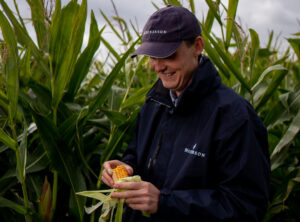 LG maize is a perfect complement to all Circle Leys, with excellent agronomic and feeding characteristics.
LG maize is a perfect complement to all Circle Leys, with excellent agronomic and feeding characteristics.
Fodder beet
LG fodder beet provides an excellent energy source combined with superb dietary fibre.
Lucerne
Lucerne offers a superb forage with the most rumen friendly protein source
Cereals
LG cereals offer many opportunities as a complementary feed in terms of wholecrop and grain using numerous different methods 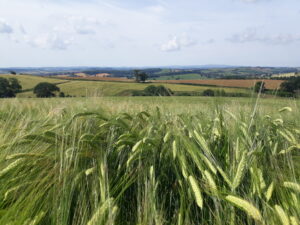
More Information
Contact your local Seed Specialist.
What are GPA and SFC?To improve establishment, most Circle Leys are treated with a GPA and Seed Film Coating as standard.
Growth Promoting Agent
GPA (Growth Promoting Agent) is a researched blend of nutrients essential for plant growth. These stimulate seedling germination, particularly under stress conditions and also encourage larger root systems, enabling the plants to absorb soil nutrients more efficiently.
Seed Film Coating
Seed Film Coating is a technique that forms a polymer film around the seed in which a range of conventional and innovative seed treatments can be carried. Seed Film Coating offers a number of major benefits to the seed and its application.
• Accurate application of GPA seed treatment
• Increased efficacy of the GPA
• Less dust in the seed
• Improved establishment
More Information
To learn more about Circle Leys, download the Brochure here.
To view the Circle Leys range, click here
Or contact your local Seed Specialist.
What sets Nickerson seed quality apart?The UK’s finest range of grass mixtures
Mixture trialling
Nickerson believe in the importance of mixture trialling. Recommended Lists from DARD, NIAB and SAC are used as a starting point, but these take little account of how individual varieties perform when grown together in a farmer’s grass ley. This is where Nickerson research begins. 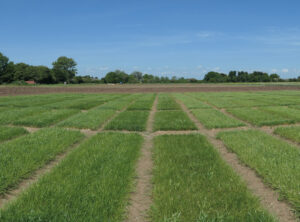
Mixture trialling is the key to ensuring that only the very best grass mixtures find their way onto your farm.
Highest seed standards possible
Good establishment is essential to achieve full production potential. Poor establishment results in weed invasion, increased poaching and loss of yield. Seed of the highest quality is therefore critical to achieve good establishment.
Germination standards

Purity standards

More Information
To learn more about Circle Leys, download the Brochure here.
To view the Circle Leys range, click here
Or contact your local Seed Specialist.
Why Circle Leys is trusted by generations; past, present and futureOver the last 70 years farming has evolved significantly.
However, during that time the one aspect that hasn’t changed is the need for high quality forage as grazed grass or conserved forage to feed ruminant animals.
Almost 70 years ago Fred Craven created a group of leys for Sir Joseph Nickerson designed with a specific purpose in mind. In the subsequent years we have added to this mixture range as farming has changed and we have adapted the mixtures accordingly.
Core benefits such as yield, disease resistance and other agronomic characteristics are vital to production and are attained through use of unique and varied varieties from a range of plant breeders worldwide.
Unashamedly we have remained totally faithful to the original thought process based around high quality forage. Dry Matter Intake and overall D-value/ME are the main drivers throughout the range, allowing the ruminant to maximise intake and therefore maintenance and production from forage.
More Information
To learn more about Circle Leys, download the Brochure here.
To view the Circle Leys range, click here


